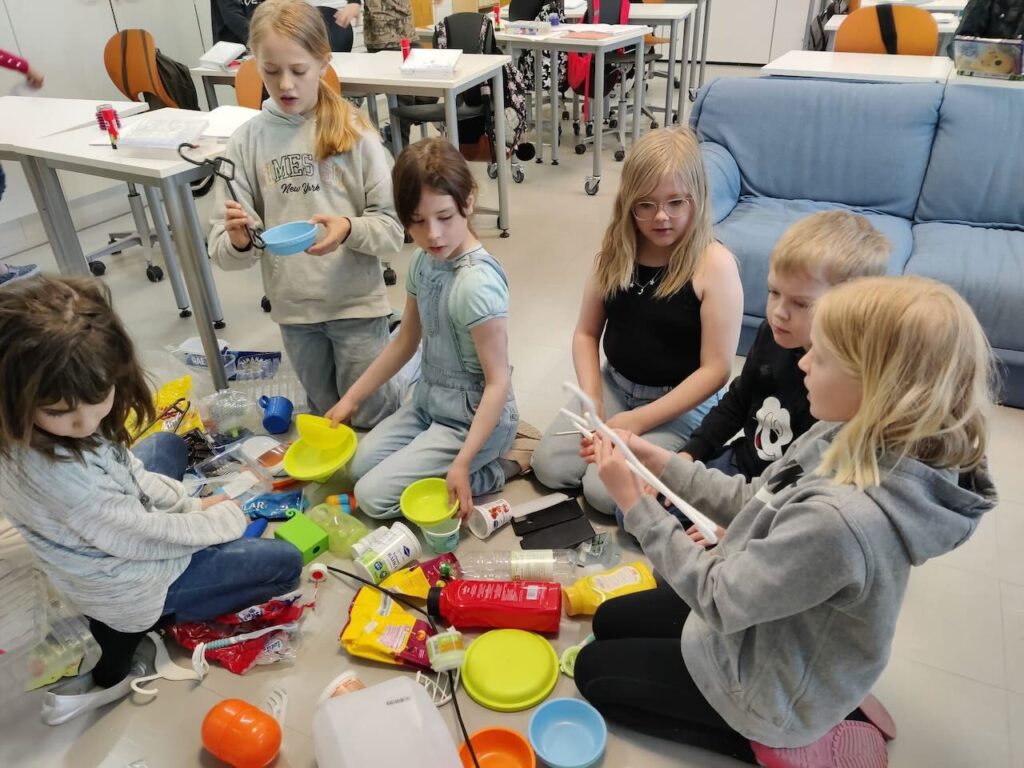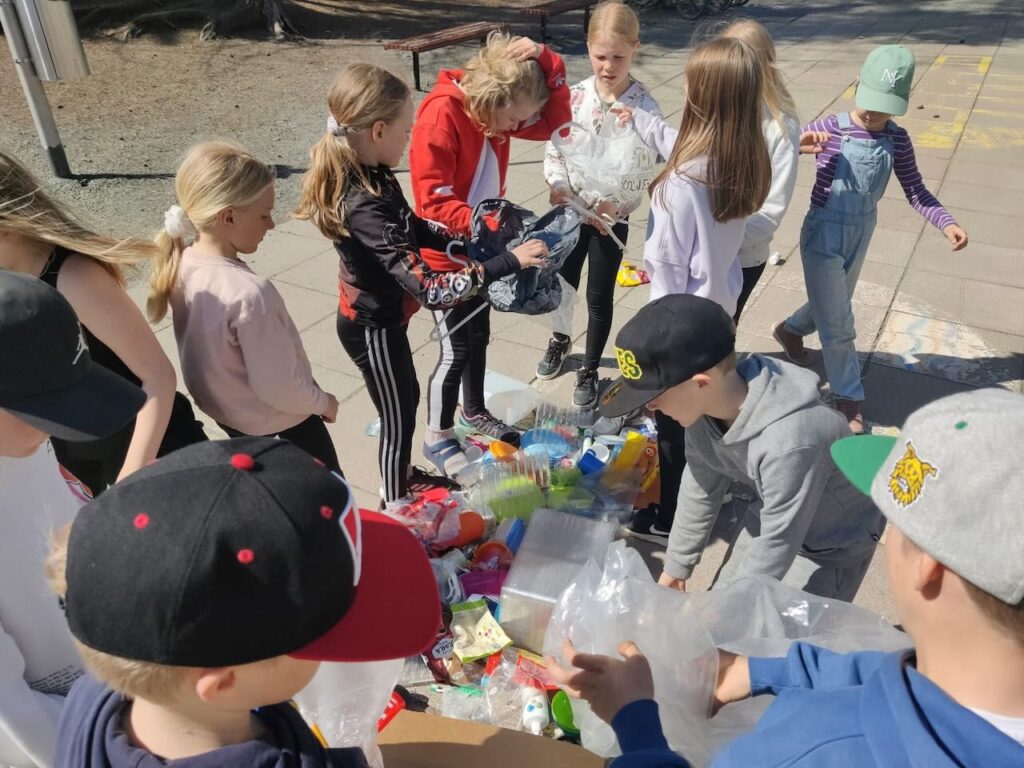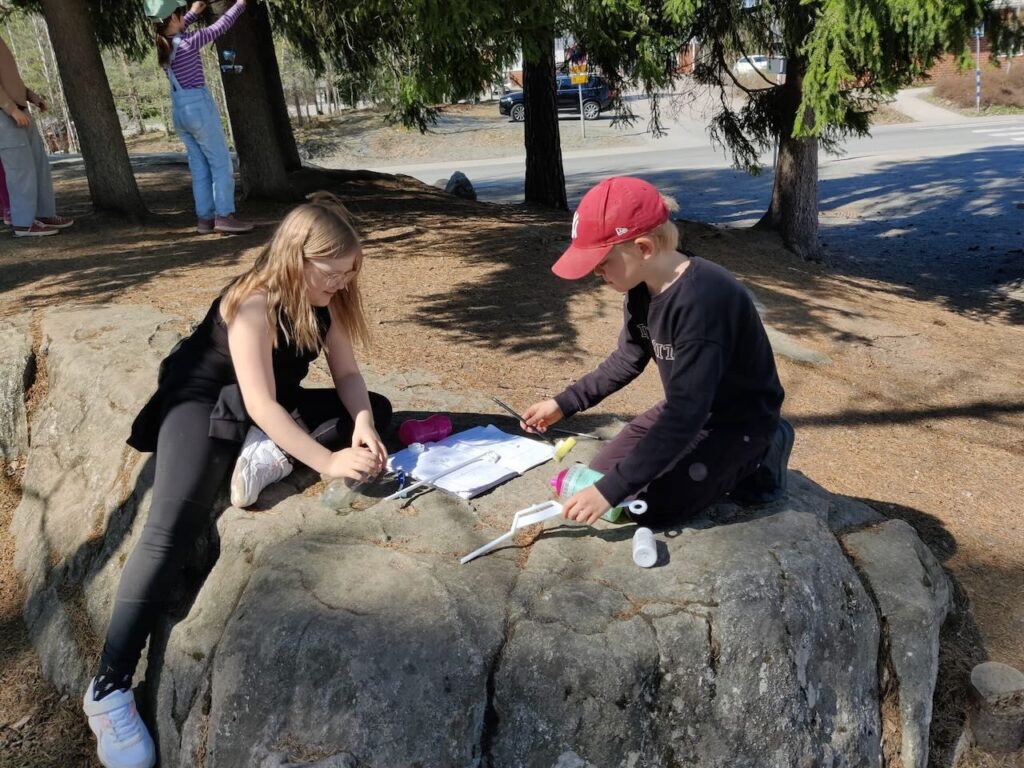Educating for a Sustainable Future 1/3
In this post series of three, we explore the teaching of sustainability education in schools, aiming to enhance the well-being of both present and future generations, even in times of uncertainty. Our insights are informed by quality research from various universities. We concluded that the topic is so important and timely that it deserves its own blog series.
This post is the first of three and focuses on considering why sustainability education is so important, what challenges teachers face related to it, and how it is addressed in the Finnish core curriculum of basic education.
Blog post 1/3
Why should we challenge our visions of what is the best for the children?
It is understandable that many of us believe that pursuing success in the job market and thereby wealth would offer the best future for a child. However, climate change challenges this thinking because overconsumption of natural resources accelerates climate change by producing emissions and by causing biodiversity loss. Sustainable consumption is based on respecting planetary boundaries, meaning that resources should be used in proportion to their renewal capacity.

In Finnish schools, phenomenon-based learning is implemented, which combines different subjects and provides an opportunity to examine phenomena from interdisciplinary perspectives, even within the same lesson. It allows, for example, the examination of climate change as more than just a biological phenomenon. Therefore, during lessons, students can also practice systems thinking, becoming aware of how different factors influence each other and evaluate the consequences of various actions and choices on a global level.
“Right now, we’re using given resources meant for the future to improve our lives, but unintentionally limiting opportunities for the next generations.”
Earth Overshoot Day marks the date when humanity’s demand for ecological resources and services in a year exceeds what Earth can regenerate in that year. In 2024, Earth Overshoot Day lands on August 1st but in many wealthy countries it occurs even earlier. For the sake of children’s future, it is crucial to learn to align consumption within planetary boundaries, so that the environment remains vibrant and climate change would not escalate.

The United Nations has launched the Agenda 2030 program, which defines 17 goals and numerous sub-goals to be achieved globally by 2030. These goals aim to eradicate extreme poverty and ensure sustainable well-being for all. A British research indicates that investing in education can contribute to achieving all these goals, which emphasizes the importance of the topic.
Barriers to Learning for Sustainability: A Teacher Perspective
In a world facing complex challenges threatening both human and planetary well-being, holistic education plays a crucial role. Teachers, as key agents of social change, are essential in fostering sustainable ways of living. However, research reveals that many educators feel unprepared to help learners develop the competencies needed for a more sustainable future.
Here are some common obstacles teachers encounter when integrating sustainability education:
- Disciplinary Silos: Often, sustainability topics span multiple disciplines, but educational systems tend to categorize knowledge. Teachers struggle to bridge these gaps and provide a holistic perspective.
- High Stakes Assessments: The focus on standardized testing can hinder multidisciplinary, learner-centered approaches. Teachers may feel pressured to prioritize exam outcomes over deeper understanding and critical thinking.
- Inadequate Professional Learning Opportunities: Many educators lack sufficient training in sustainability education. Continuous professional development is crucial to empower teachers as facilitators of learning for sustainability.
How Education for Sustainable Development is implemented in Finland?
According to the Finnish core curriculum for basic education, schools should promote an Ecosocial Approach, which emphasizes that all actions should be carried out within the planet’s boundaries. That approach highlights the global impact of climate change, acknowledging that high consumption by for example Finns contributes to its acceleration. This occurs despite the factories producing goods being often located abroad, and the extreme weather events resulting from climate change happening in distant regions.

“Although we may not witness the consequences of our actions directly, as educated individuals, we can still consider them in our behavior.”
In Finnish schools, phenomenon-based learning is implemented, which combines different subjects and provides an opportunity to examine phenomena from interdisciplinary perspectives, even within the same lesson. It allows, for example, the examination of climate change as more than just a biological phenomenon. Therefore, during lessons, students can also practice systems thinking, becoming aware of how different factors influence each other and evaluate the consequences of various actions and choices on a global level.
In the next blog post, we will examine how emotions related to climate change impact actions and share tips on how Finnish sustainability education could be implemented in other educational systems. Stay tuned and don’t forget to subscribe to our Newsletter if you haven’t done it yet!

Heidi Riikonen
Sustainability specialist
Heidi Riikonen is a Master of Education graduate from the Tampere University in Finland, who has researched the promotion of sustainable development through education in both of her theses. She believes that the most important task of education is to prepare new generations for the future but updating knowledge or developing understanding does not depend on age. The adults of today have a responsibility for the well-being of future generations, and therefore every educator should be interested in implementing the principles of sustainable development within their sphere of influence. Alone we may feel hopeless, but together we can make a significant difference and offer a better future for everyone!
